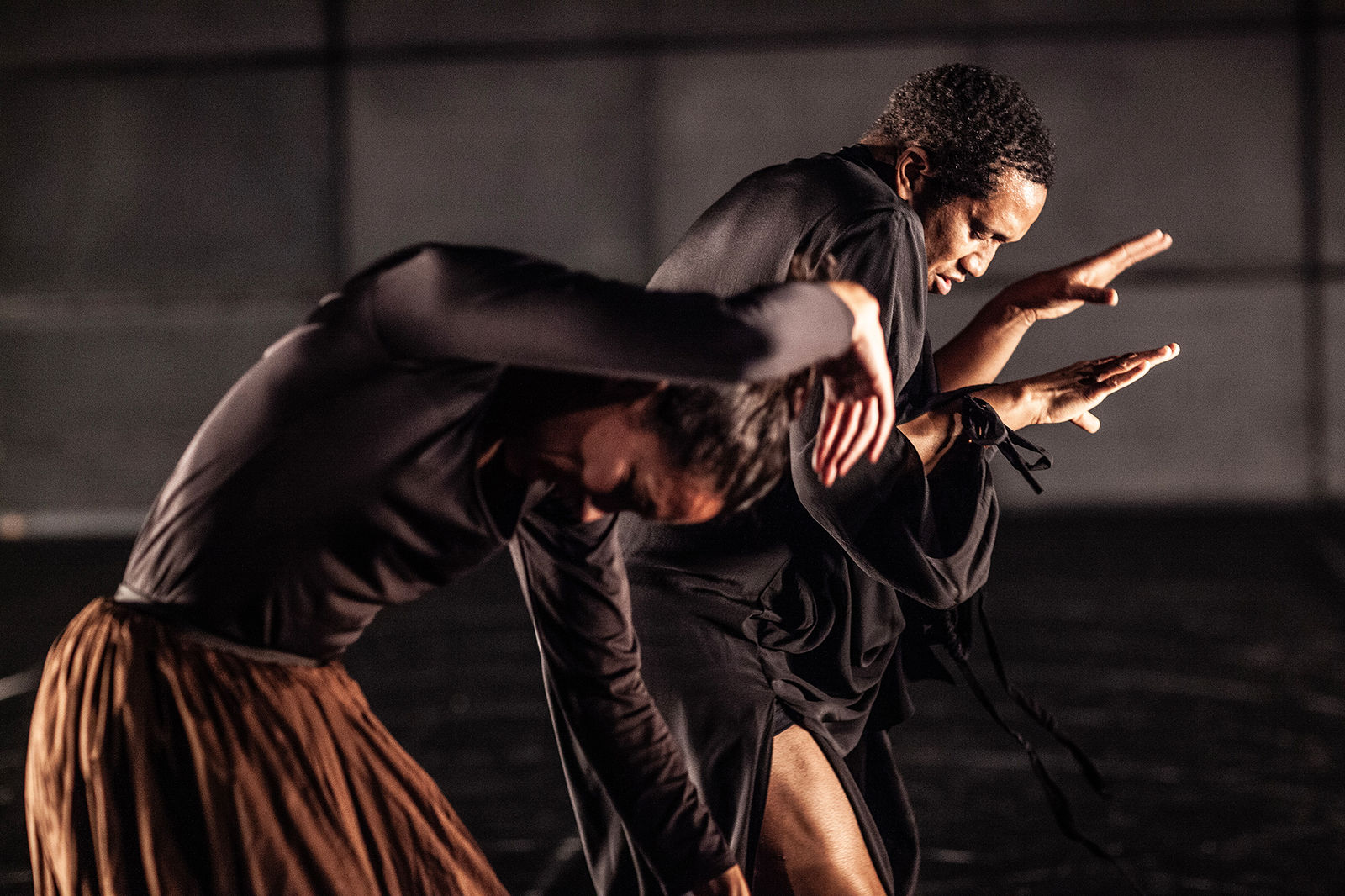

Tambourines
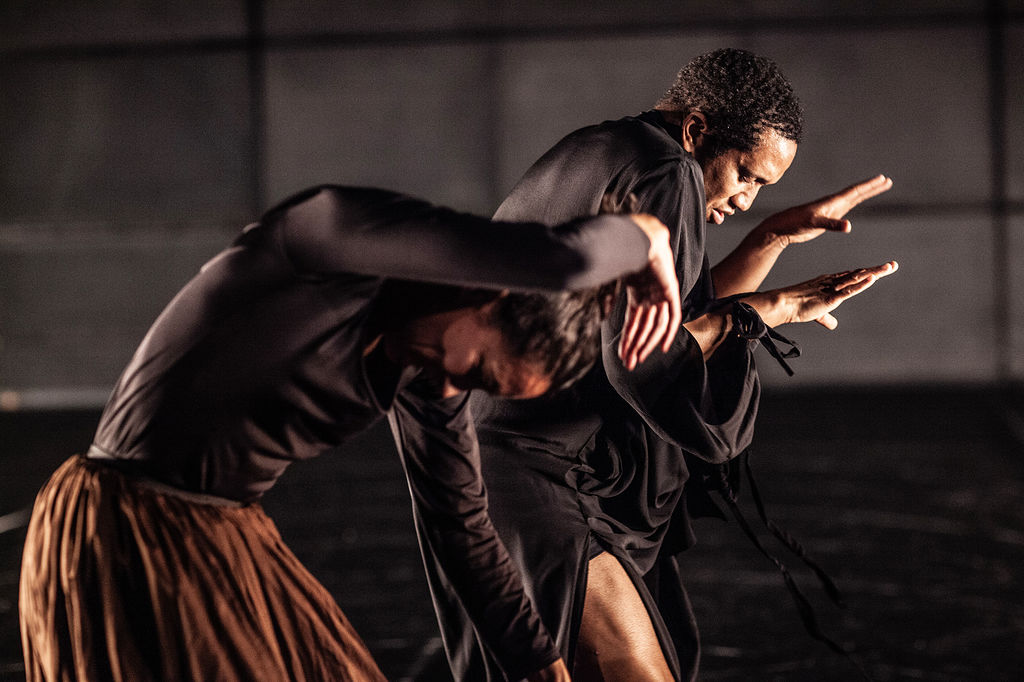
About this Evening
A young woman has a baby and everyone wonders who the father is. But Hester Prynne refuses to tell. So much stubbornness cannot go unpunished in 17th century America and so Hester is forced to wear a scarlet “A” on her chest, clearly visible at all times.
When the author Nathaniel Hawthorne wrote the novel The Scarlet Letter, there was no term for women who had a liberal approach to their bodies and sexuality. Let alone support. In their honour, choreographer and dancer Trajal Harrell takes an imaginary look back: what might have happened in those colonial times, when European settlers settled on foreign territory and subjected their women to arbitrary rules, if a woman with an illegitimate child had actually been condemned to wear the scarlet “A”? Where would one have expected malice, where solidarity? By creating a memorial to this remorseful history, the performers and audience celebrate the possibility of changing the future together.
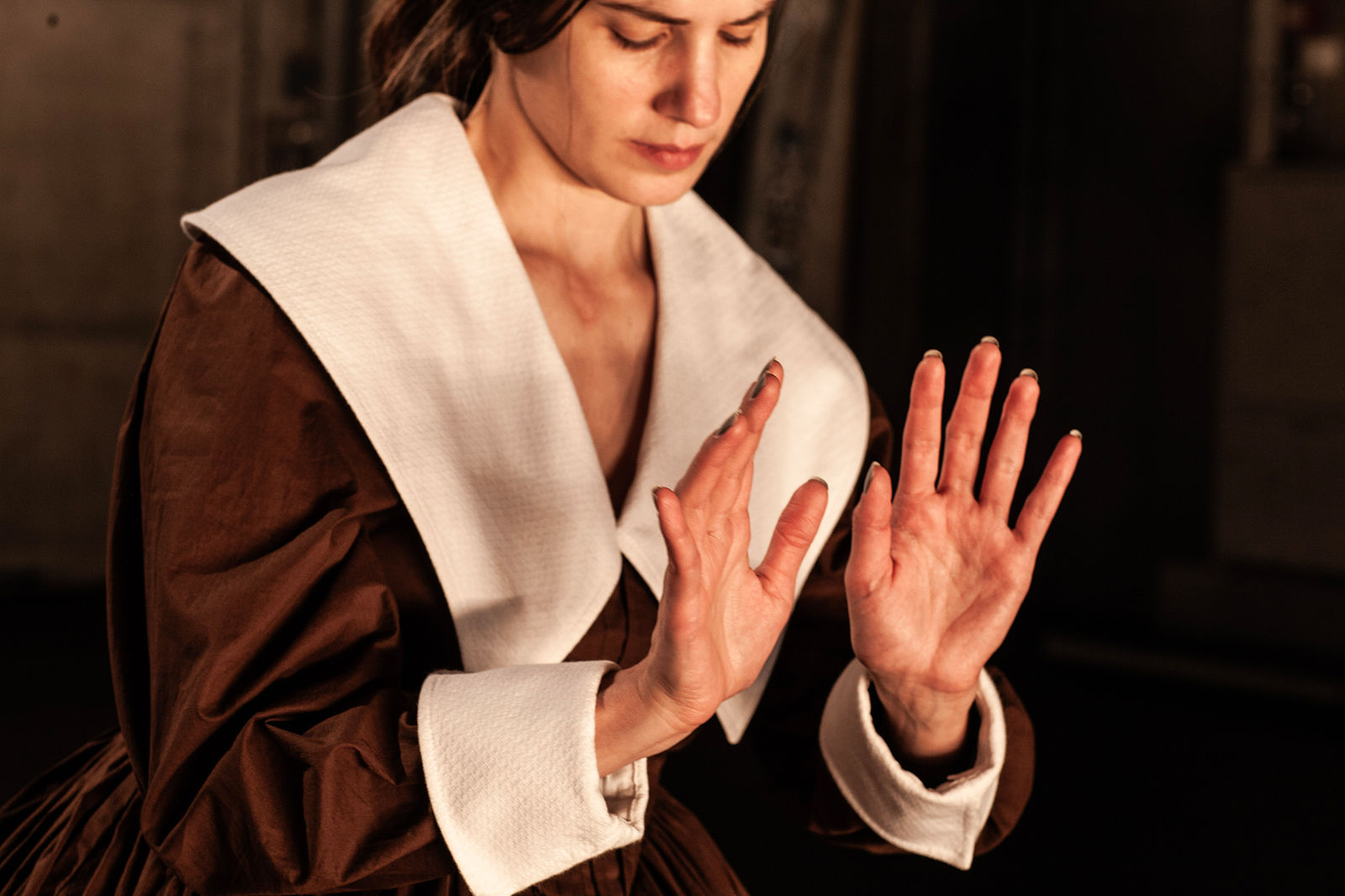
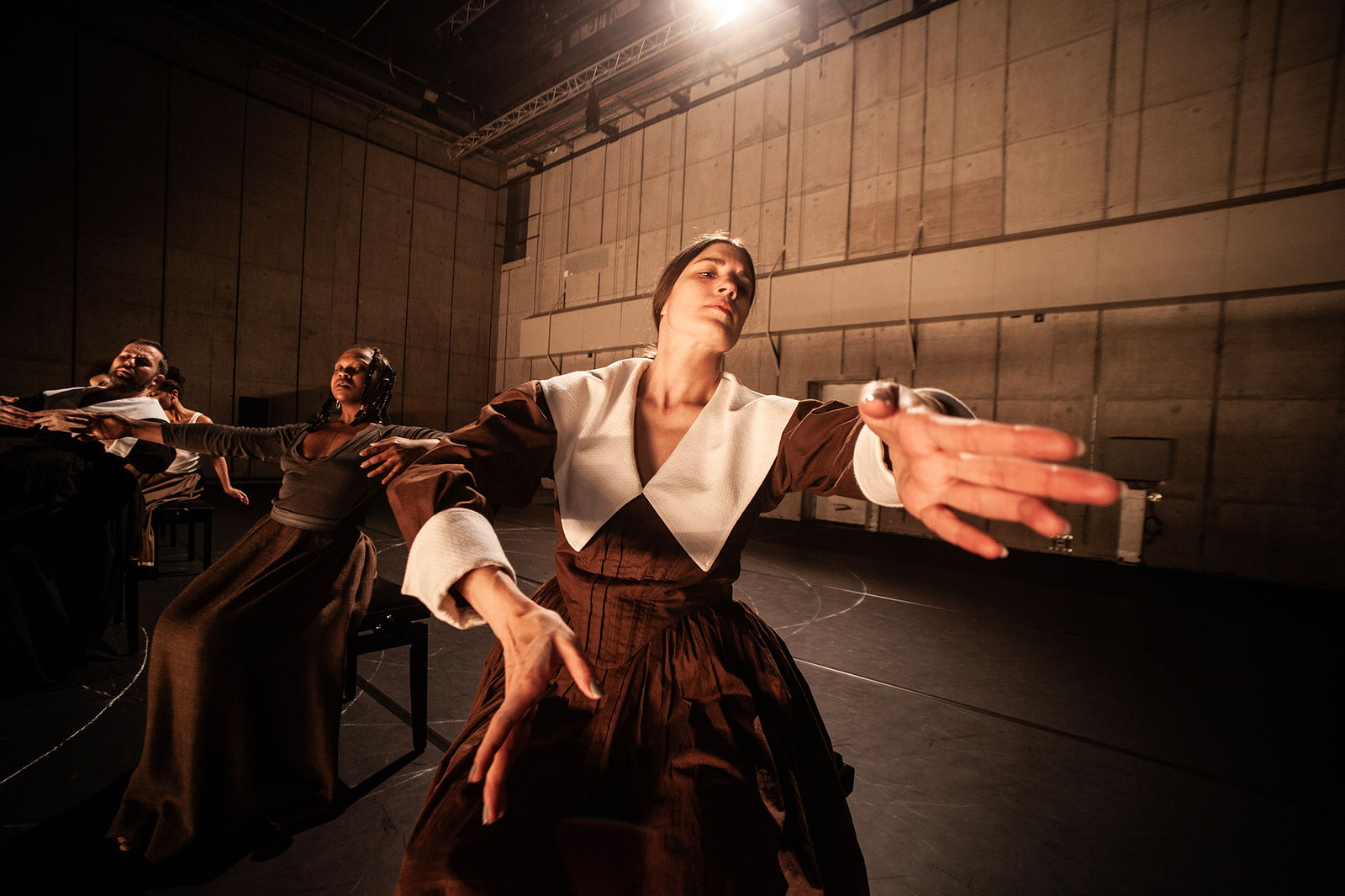
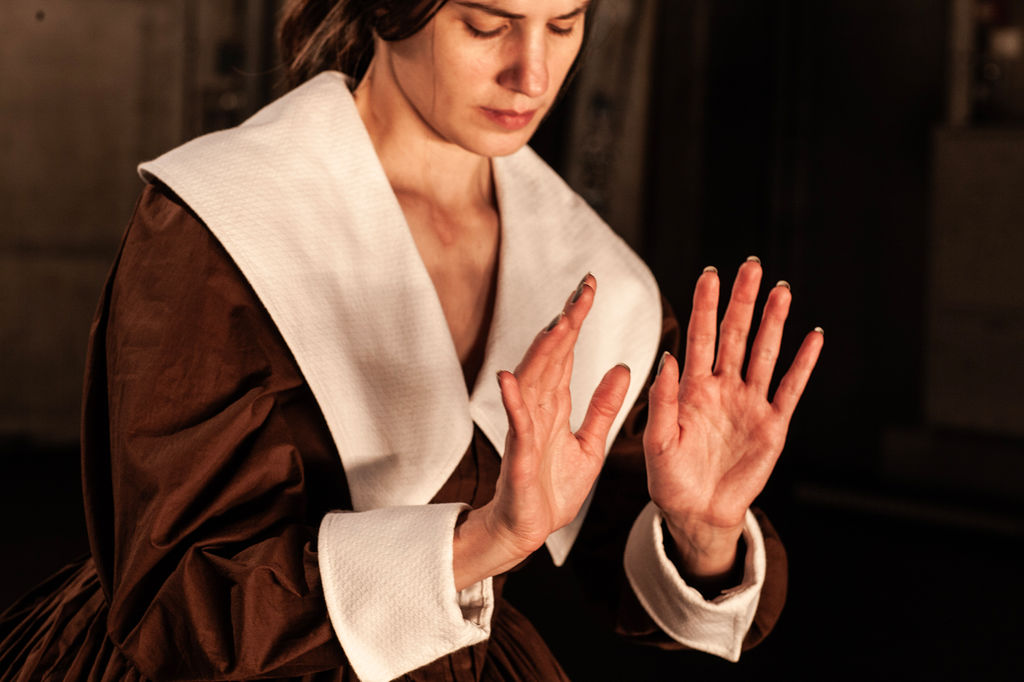
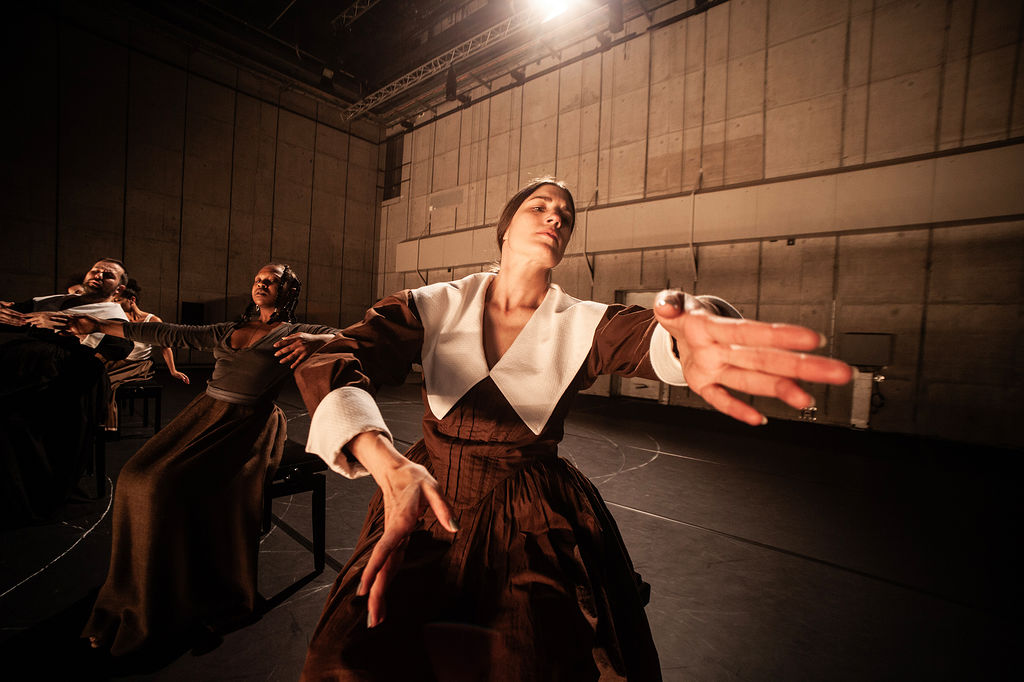
- Staging, Choreography, Stage design, Costume design, Soundtrack
- Trajal Harrell
- Lighting
- Sylvain Rausa
- Co-Sound design
- Trajal Harrell / Santiago Latorre
- Rehearsal Directors
- Stephen Thompson / Vânia Doutel Vaz
- Dramaturgy
- Katinka Deecke
- Audience Development
- Mathis Neuhaus
- Touring & International Relations
- Björn Pätz
- Production Assistance
- Camille Charlotte Roduit
- Costume design Assistance
- Mona Eglsoer
- Production intern
- Selma Jamal Aldin
- Costume design intern
- Sally Ndiaye
- Inspection
- Aleksandar Sascha Dinevski
A production of Schauspielhaus Zürich with the Schauspielhaus Zürich Dance Ensemble
A coproduction with Festival d’Automne à Paris, Les Spectacles Vivants – Centre Pompidou Paris
Supported by Müller-Möhl Foundation & Trajal Harrell Schauspielhaus Zürich Dance Ensemble Fan Club
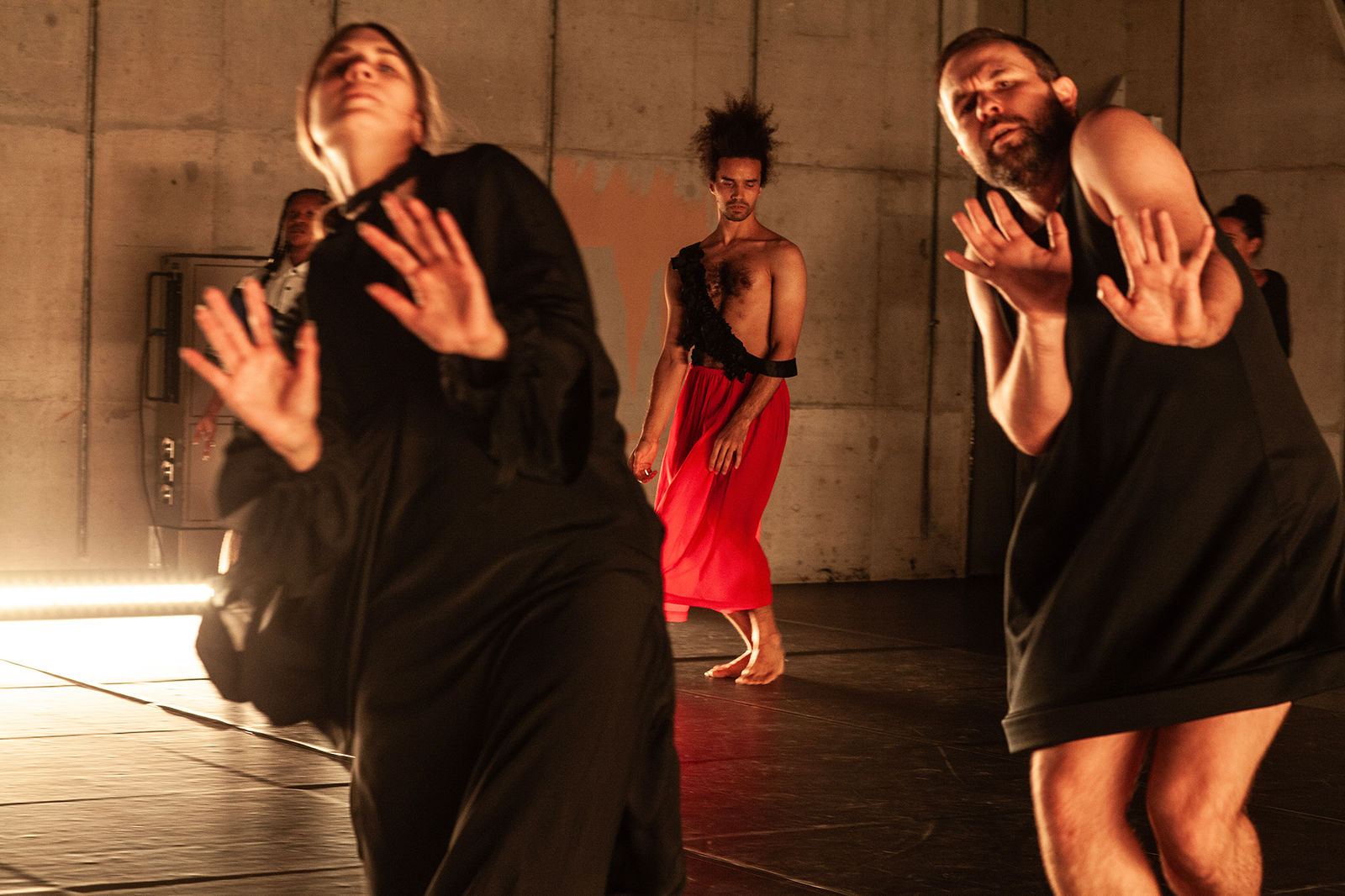
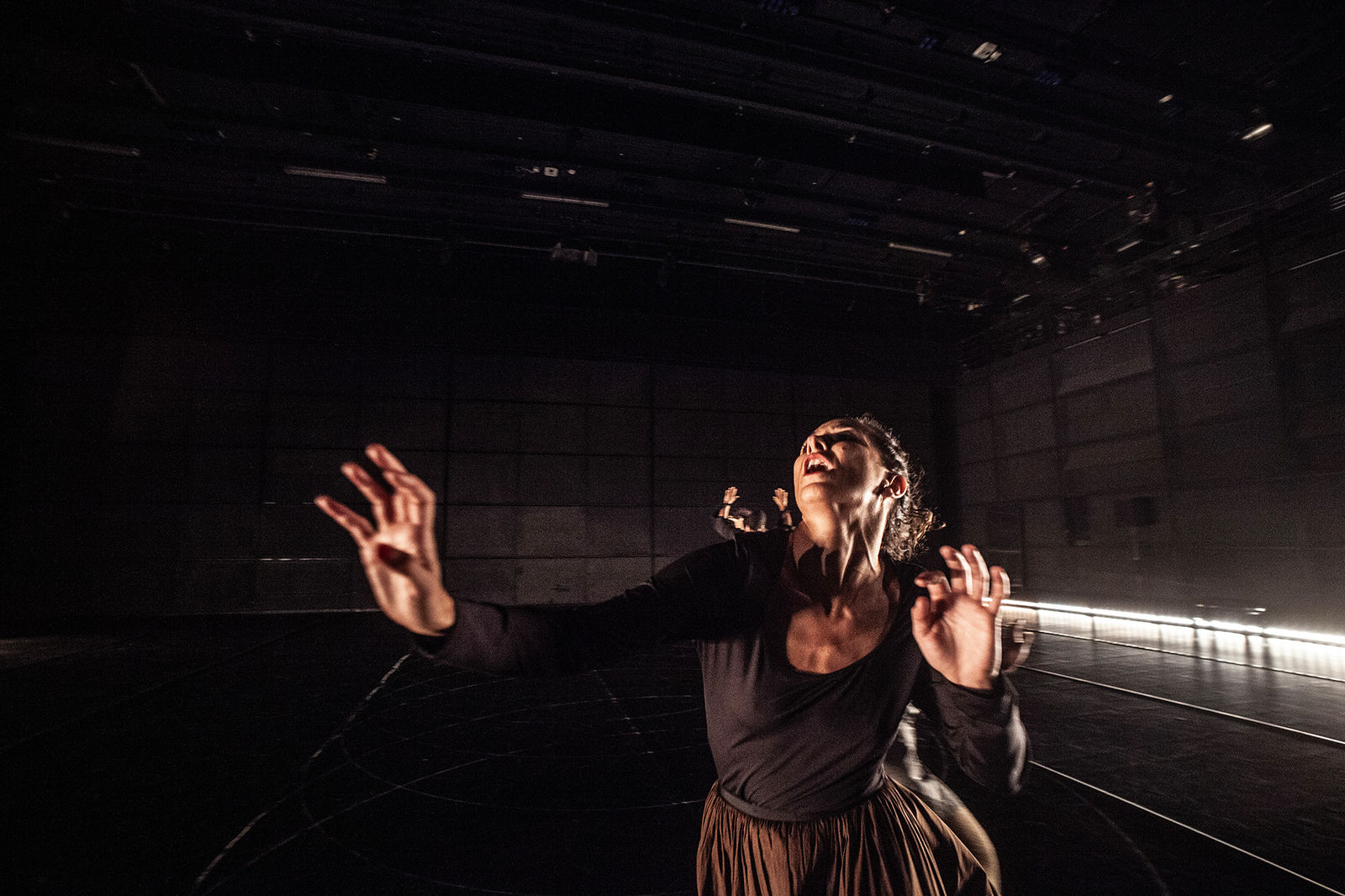
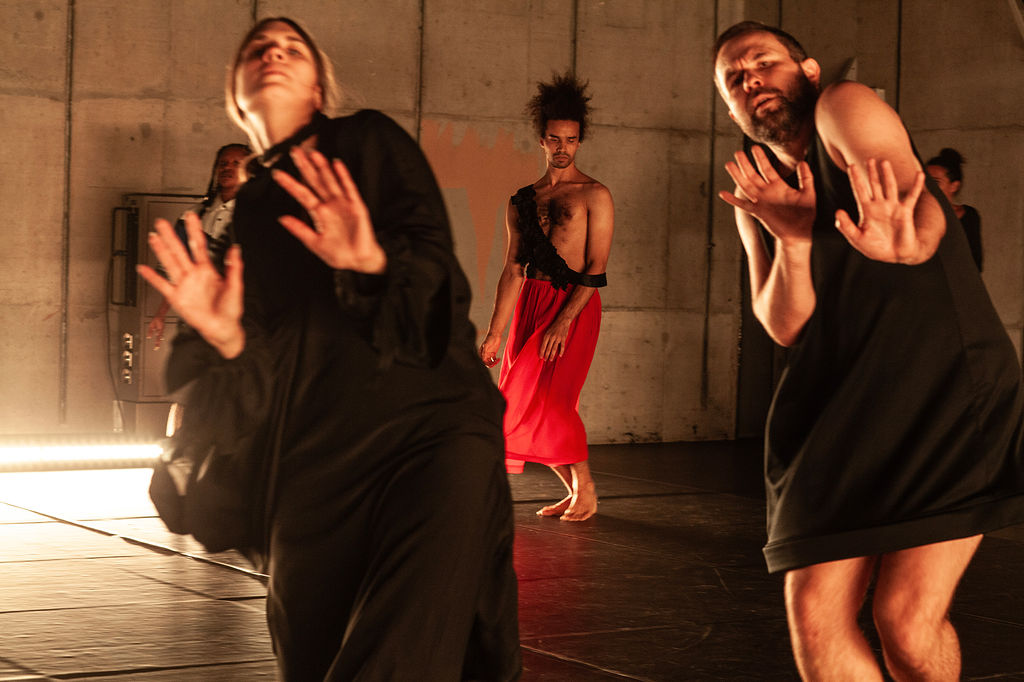
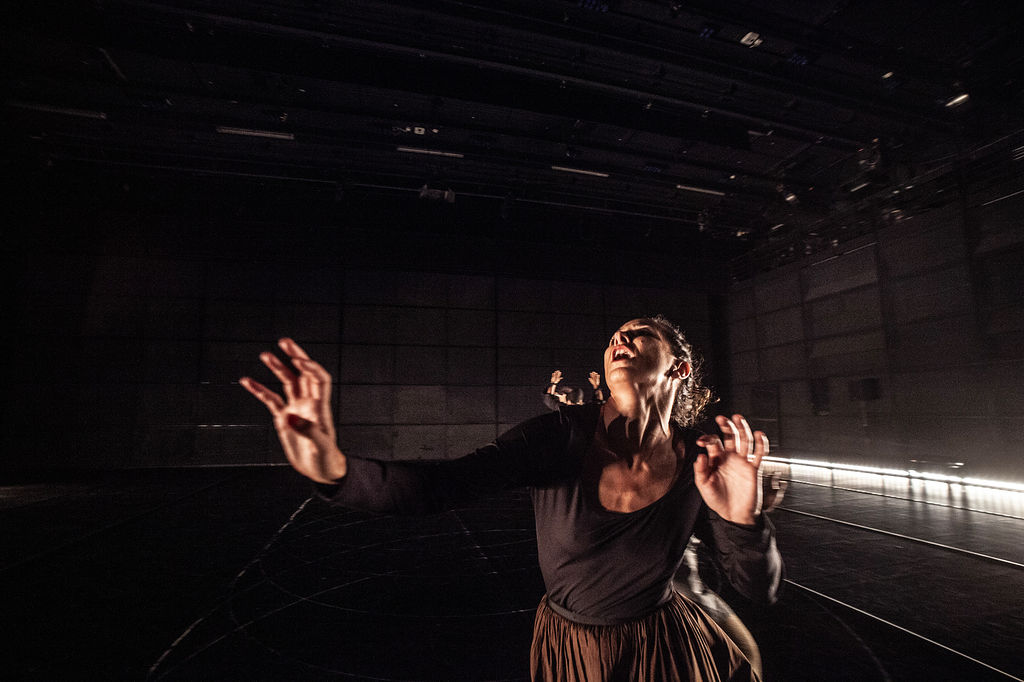
About this Play
This is the last premiere of Trajal Harrell and the Schauspielhaus Zürich Dance Ensemble before they bid farewell to the Schauspielhaus in the summer. Once again, everything that has distinguished this ensemble over five years and earned it a broad audience both in Zurich and internationally comes together: the accessibility and poetry, the clear politics and the extraordinary sensitivity for aesthetic settings. A preview of this production was presented in autumn 2023 at the Festival d'Automne in Paris and now celebrates its world premiere in Zurich.
Nathaniel Hawthorne wrote his first great novel in 1850. The Scarlet Letter is a page turner full of passion, a linguistically and psychologically sophisticated work of art that translates history into human life and experience. In the United States, the novel is practically required reading in schools; many people who grew up in North America are familiar with the book and immediately recall specific memories when the name Hester Prynne is mentioned. Hester Prynne is the name of the main character in Hawthorne's novel and even from a non-American perspective she is an astonishing character. At the beginning of the 17th century, she travelled across the Atlantic with her husband and many other people from Europe to start a new life in the "newly discovered" land. During the crossing, her husband goes overboard and has been missing ever since. Hester begins her new life alone on the east coast of the other continent, as part of a small community, which over the centuries will eventually grow into the flourishing metropolis of Boston. Not only is life in the colony hard, but there is also a growing realisation among the settlers that the "new" land is not so new after all, but was colonised long ago by people who quickly lost out due to a lack of firearms and bad intentions. Hester integrates herself into the small community until an event occurs that throws her life off course. She falls pregnant and is not willing to name the father of the child. The radical Puritans, who in the face of climatic and other adversities in the "New World" regard the biblical word as the only valid authority to judge right and wrong, appropriate and reprehensible, punish Hester harshly. After a few months in prison, she is released and sentenced again: As soon as she leaves the house, she must wear the letter A clearly visible on her chest for the rest of her life. What exactly the A stands for is not revealed in the novel, but there have been many interpretations, from "Adultery" to "Angel". The main part of the novel then focuses on describing the many years that Hester Prynne spends in this unforgiving community after the birth of her daughter, living on the outskirts of the village, ostracised by everyone, despised, and without human support; always wearing the bright red A on her chest.
The novel is not only a gripping psychogram of a strong-willed and principled woman, but also a very closely observed depiction of how a community appropriates this woman's body and soul, and claims the right to dispose of them. From today's perspective, the morals underlying this ostracism may seem outdated, but the suspicion remains that the principles by which women are still judged in public and often in private are not entirely free of the pseudo-moral principles of this misanthropic society.
When Trajal Harrell takes on this "great American novel", we cannot expect a retelling of the novel. Rather, it is individual motifs, perhaps a spirit of the novel, an attitude that finds its way onto the stage, an affect, a feeling of kinship. Trajal Harrell and the Schauspielhaus Zürich Dance Ensemble invent a world that may be buried beneath Hawthorne's world in the salty soil of the American East Coast or hovering above it in the Atlantic air, a world in which stories and history are told differently than in novels and history books.
Hawthorne's story begins with a narrator finding an old manuscript in a storeroom in which the "true" story of Hester Prynne is meticulously retold. An unheard-of historical find, the narrator concludes, which he makes accessible to the inclined reader through the subsequent reprint of the manuscript. It is the fiction of a past reality that gives the novel its aesthetic basis. Trajal Harrell is well versed in fictions of past realities, so-called "historical fictions", in which the possibility of a different past is invoked, form the basis of the vast majority of his stage works. For Tambourines, he invents a parallel world to the historical world of colonial North America that perhaps took place, could have taken place, and maybe should have taken place. It is a world in which Hester Prynne is not alone, but is accompanied by beings, entities, bodies, spirits who stand by her side and face the tragedy together with her.
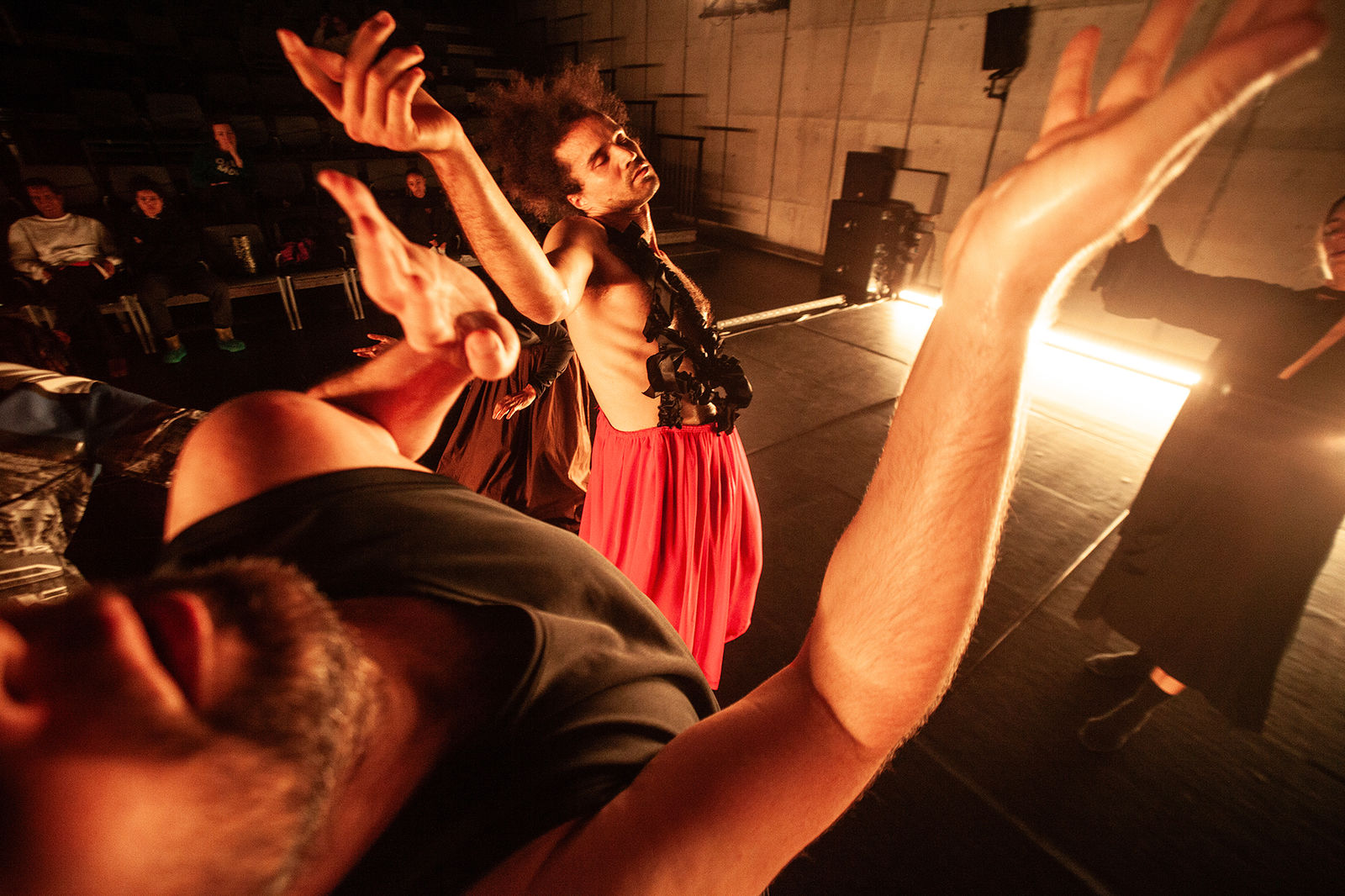
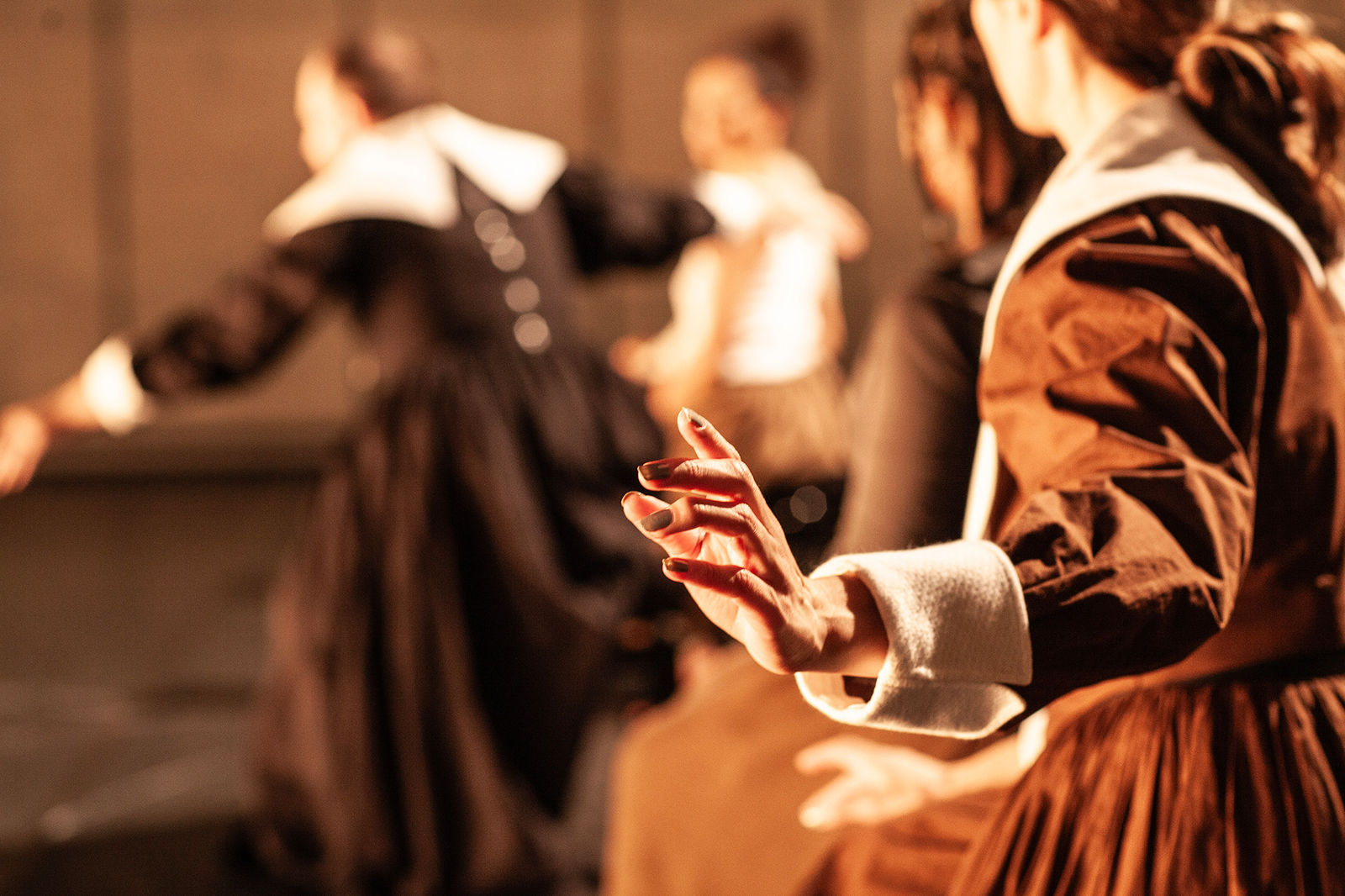
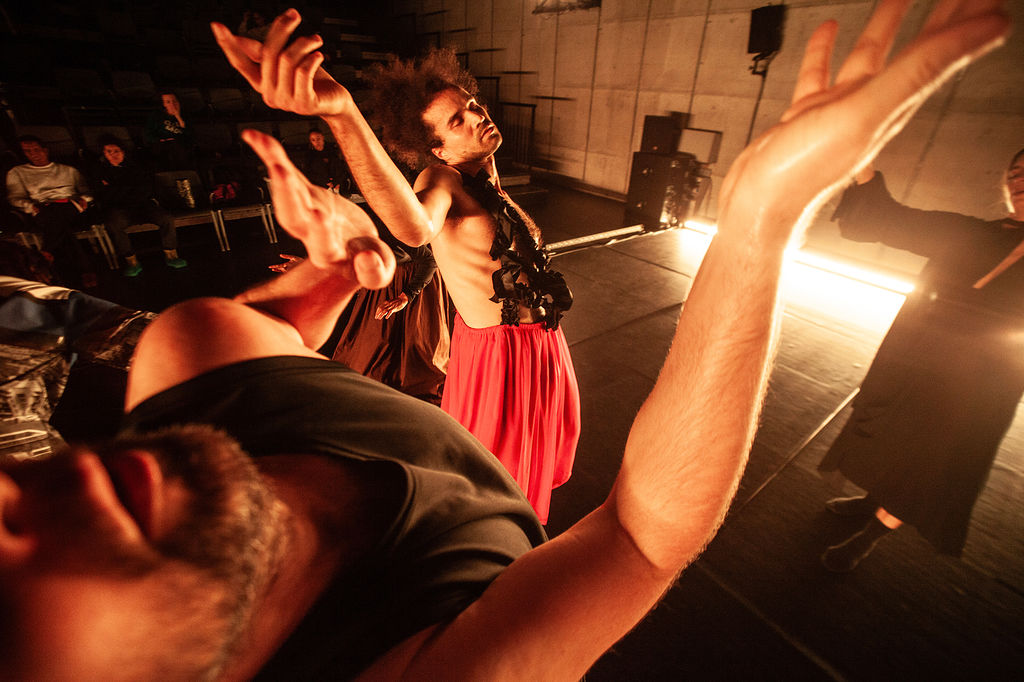

Tambourines has three parts, each of which is assigned a title and a tempo:
Fornication (Unzucht) allegro
Education (Erziehung) moderato
Celebration (Fest) andante
The three parts are very different and there are countless ways of communicating about them, inventing levels of meaning for them, and contextualising them. For this reason, it is not up to this text to define the interpretative framework within which the evening takes place. The evening opens itself up to all attempts at interpretation and at the same time resists them by always being both the one and the other, both the propelling, searching, striving, as well as the held, questioning, resting. Tambourines, which takes its title from the percussion instrument that accompanies dancing in many cultures, is not a danced adaptation of a novel, but a poetic exploration of the foundations on which we develop relationships and politics today. Not only in colonial America in the 17th century were women humiliated and tortured, but of course it was also commonplace in the middle of Europe, in Switzerland, France and Germany, to exclude women from communities who did not follow the behaviour dictated by powerful men. Prison sentences, serfdom, murders trivialised as "witch burning" – this is also the history on which we have built our society and the rules of coexistence. A lively awareness of this past is only slowly growing. Of course, it is difficult to mourn crimes that seem to have been committed so long ago. But was it really that long ago? Even today, we still have to get some control over our ingrained patterns of thinking and feeling that have survived from another time into our Swiss present. Not only women, but also countless others who stand up to fear and do not give way to shame are still exposed to derogatory moral judgements, if they are not actually threatened with the violation of their physical integrity or the threat is even put into practice. It is still dangerous not to be what "the general public" expects. Tambourines is an underground network in honour of those who do not give in to violence, who do not give in to fear, who do not accept humiliation, past or present.
And yet, the evening does not judge, not even those who cling to the perpetuation of violent coexistence. Often those whose morals and politics have created the entire patriarchal mess and maintain it don't know any better. Sometimes it is deep belief or never corrected habits that make the rules seem inescapable; sometimes it is the deep-seated fear of being hurt; and sometimes it is the childish desire to appear strong and invincible. Of course, none of this justifies the violence that emanates from many people. But, just as Tambourines takes on the religious foundations of Hester Prynne's colonial community in "Education", for example, and finds great beauty in it, it sometimes helps to recognise the unloved counterpart as a human being in all its complexity.
Tambourines is an evening for everyone in the best sense of the word – as long as the ability to grasp the world through dance is accessible to all.

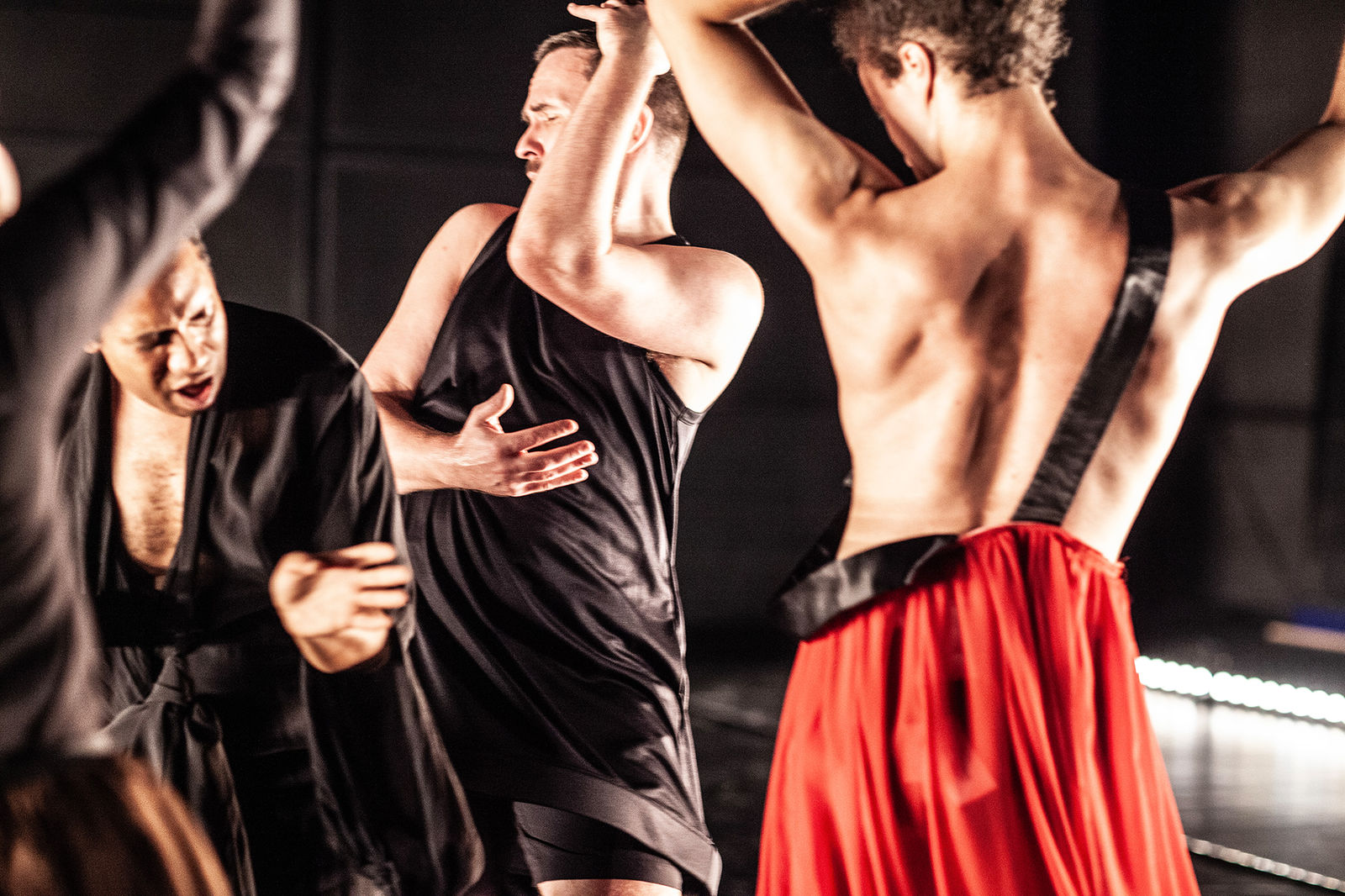

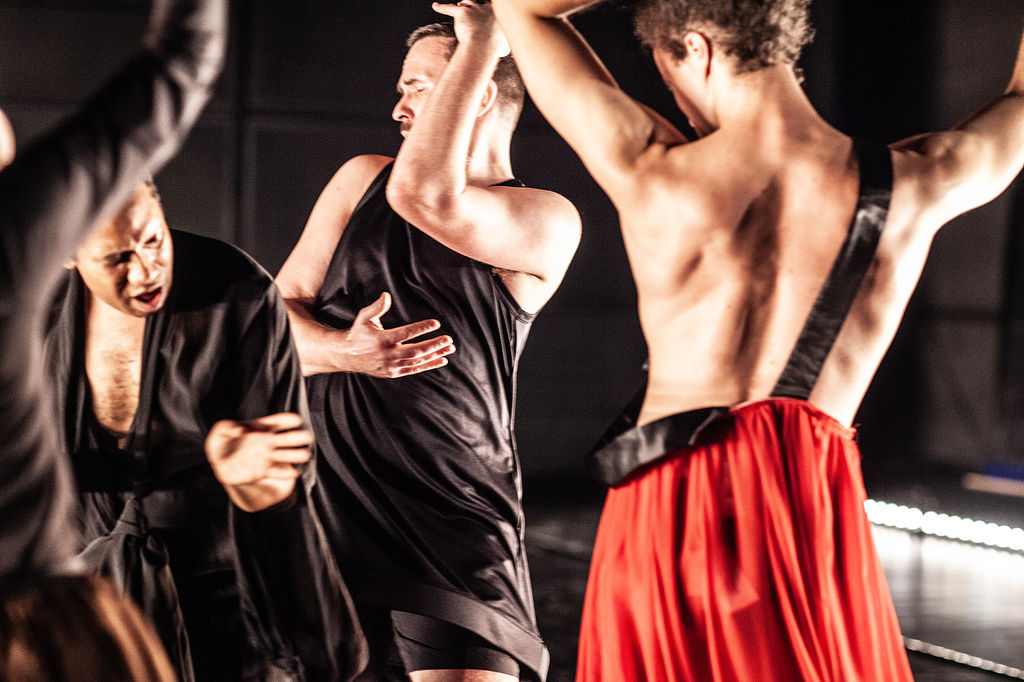

Ad

Ad
The Higher Being
Dramaturg Katinka Deecke in conversation with Trajal Harrell
Katinka Deecke: Tambourines is another brick on the road that you build with historical fictions and that lead to multiple answers to the question “What if it had happened differently”. How does Tambourines situate itself in the «What if…”?
Trajal Harrell: When I was creating the piece, I was thinking about colonial America. I have lived mainly in Europe for quite some years now but I realize that a lot of my imagination is coming back to the United States. Tambourines is American as Monkey off my Back or The Cat’s Meow is American as well as Maggie the Cat. Those pieces could be seen together, in a way they are an American trilogy in the way that they are looking at American culture from afar. I was an American studies major in college, so it's a no brainer that I would work on that at some point. Among these imaginaries Hawthorne’s Scarlet Letter came back to me again and again, especially by its evolving around slut shaming. This novel is for me one of the foundation texts about slut shaming. I asked myself what if Hester Prynne, the protagonist of the novel, what if she had had a community to support her; what if Hester had had a community that didn't slut shame her. It is an excavation of history and ritual. In part one and two we set up a historical framework that finds its expression through the ritual that happens in part three.
KD: When we speak about the three parts – each of them has a title, “Fornication”, “Education” and “Celebration”. How did these titles come up?
TH: Well, first of all they come from the narration in the book. Then they have a lot to do
with American puritanism. Hester Prynne has to wear this “A” because she is supposed to be ashamed that she had sex outside of her marriage. Fornication is the trigger for the narration to happen. I try to imagine how the different conflicts between desire and puritan morals are expressed in the body and its relationship to societal structures and issues of privacy. It is very important to me that I do not continue to slut same her because I realize that there are societal forces working for the continuation of the shaming, even today. At the same time, I would like to try to give space for the different ways that people experience their belief systems. Privacy can also be an issue of how one individually struggles or is in dialogue with their own belief system. I try not to point the finger. That is why I think dance can bring an important vista. The conflict exists as something vital in the body itself, and I would like to open a space for the audience to really sit in the questions rather than to point the finger. This is very important to me.
KD: It is astonishing, especially in “Education”, with how much love this community is painted, a community that from our today's perspective is characterized by their violence, by the rigor of their rules, by the strictness of their behavior and the lack of liberty for the individuals. In “Education” we see them appreciating and enjoying themselves, especially in their belief and in their transcendental relationship with God. Despite the violence they execute, you paint them with a lot of love and tenderness, in a way you honor them.
TH: This is embodied primarily in the figure of the teacher. The teacher is passing on their very confined view of how people should behave and act in society and how they should not act. I wanted to make sure that although this person was passing on her belief system, which I may or may not agree with, we see that there is space in this. Again, it goes back to dance. It is very difficult to find words for it. There is a space of togetherness where that differentiation may fall apart. This is what unfortunately language is not very good at. In dance we do not have this clear sense of meaning, but the body can speak the truth. Sometimes we even can find a place of peace there, a possibility for peace among people. There is a possibility of togetherness, a possibility of understanding where potentially completely different sides actually fall away. And what is left I cannot name. That only happens in the performance that we see. It is about finding the dance. I work towards that, but I do not fully understand. In «Education» we see the belief and we see the pedagogy of the belief but we also see something else that this teacher opens up and that I relate to. I think it has something to do with her humanity. Yeah, I try to go with that. It is the love I try to find in their own conflicts, their imperfections and singularities: their humanity.
KD: As a today’s perspective on Hawthorne’s Scarlet Letter, Tambourines also works on reflecting the gaze on women by our actual western society. Of course, one could look at our western society today and perceive it very differently from the colonial society of the 17th century at the American East Coast, one could think that we live in a liberal society where the limiting restrictions of body and desire are not in force anymore. Do you see traces of the regimes that women were subjected to in these colonial communities in our today’s world?
TH: I think this goes back to my ongoing research and my work on Butoh. Butoh was trying to make a place of representation for people who were not represented in Japanese theater since the early Japanese folk theater. Sex workers, drug addicts, criminals, disabled or older people. Butoh made a place for the weak. Tambourines somehow abstractly deals with people that we cut out of society and for whom we still do not hold a place for — we somehow delegitimize them in our minds. People who deal with addiction and people who make their livelihoods from sex. I think that there is a close relationship between the search of addicts and of religious believers. There is a transcendental aspiration in both, a search for a high or higher being. I do not want to imply that they are all the same but it is interesting to see the connections. We do not know how to create a non-judgemental language in our society for people who search for this high in its many guises. This is something which is at the very core of what I do and it is difficult for me too to put it in words. But I would say that those traces are in those two things, in the way that we as a society treat sex workers and how we deal with drugs and the many forms of addiction.
KD: The other day you said that you see the end of your Butoh period blinking at the horizon, a period that lasts now for 11 years. Where is the Butoh in Tambourines?
TH: I think our dance now is in general in Butoh mind. In the last years we tried very hard not to appropriate Butoh in a bad way but to really let it enter into our bodies. To me, “Education” is totally Butoh. It is not the cliché of Butoh but the place we dance from is deeply connected to our Butoh mind. There also is an emphasis in the work on the role of the face and its expressions, that comes from Butoh too, as well as from the from the voguing dance tradition.
KD: Tambourines offers also an insight on your take on minimalism, the repetitive movements, the rhythm of each part playing with regularity and variations.
TH: Minimalism is where I started. The first piece I ever made, the first little solo that I made in 1999, was all about minimalism, it was about how to make voguing and minimalism go together. I also think that the Puritan esthetic is very minimalist, Puritanism had a certain minimalism about it and I wanted to play on that. «Fornication» is not minimalist in its expression, but in the way it occupies space as a sculptural object. In the first part I wanted a singular moving thing holding the space. Of course, it is not very monochromatic but you see these very repetitive gestures and structural forms in an abstract space. And then in “Education” it becomes even more sculptural and gestural but the space is less abstract. I was looking at a lot of Sol LeWitt while I was making Tambourines so for sure there are these influences. One my earliest influences was the choreographer, Lucinda Childs who collaborated with LeWitt and is especially known for her work in minimalism. I was trying to articulate some of the esthetics of this Puritan world that we could relate to without being dogmatic.
KD: Tambourines is your first piece after the accolade of the Cour d’Honneur in Avignon last summer. How did this first creation after the coronation go?
TH: It was very difficult (laughing). The hard thing was that I really, really, really wanted to take a risk after the Cour. And I wanted to make something that would arc back to some of my earlier works. A lot of that work was based on minimalism but it was not as resolved in its esthetics. Maybe that is the tension between the three parts that no matter what, they're very different. By that difference it creates something that is unresolved in a certain type of way, it causes a friction. That was a risk for me. It was hard to keep going after such a big show and to say: Okay, if I don't take a risk now, I may never be able to take a risk again. I mean the Cour was a risk too but it paid off. And therefore, it doesn’t get easier to take another risk. It gets harder. So, I tried to give myself the permission to risk something and to make something that may cause frictions. But I felt that it was now or never. I was scared to do it and I did it.
KD: What does it mean to you that Tambourines is the last piece of the Schauspielhaus Zurich Dance Ensemble?
TH: You know, life goes on. But there is one thing I would like to stress: With this piece I wanted to celebrate the costume departments at Schauspielhaus Zurich. The costume departments really supported me over the years – omg, I will start crying... From the beginning they really embraced me and adopted my work, although my way of working is very different to what Stadttheater departments are used to. But they never judged me, they just supported me in every way they could. The technical departments supported me too, but as costumes have a distinguished function in my work the costume departments were specifically challenged. The connection between the costume departments and me became very strong over the years and with Tambourines I really wanted to showcase their work. The idiosyncratic «colonial dresses” that play an important role in the show were made specifically for Tambourines and became its symbol. It was the first time that I really could centralize the craft of the dressmakers of Schauspielhaus Zurich and that feels important as a way to end our collaboration. But of course, I will miss all the departments, they were all unexpectedly supportive to my work and contributed very much to making me feel welcome here.
KD: Is there anything else you would like to mention before ending this interview?
TH: I just would like to say that I am amazed at what our lighting designer Sylvain Rausa did. The lighting in Tambourines in our theater, the Box is very special. I don't think it can be repeated in a lot of places, it is really singular.

Ad

Ad
Imprint
Editor: Katinka Deecke
Photography: Orpheas Emirzas
Offizielle Ausstatter des Schauspielhauses Zürich:
MAC Cosmetics, Optiker Zwicker, PKZ Men & Women, Ricola, Südhang Weine, Tarzan Swiss Streetfashion





